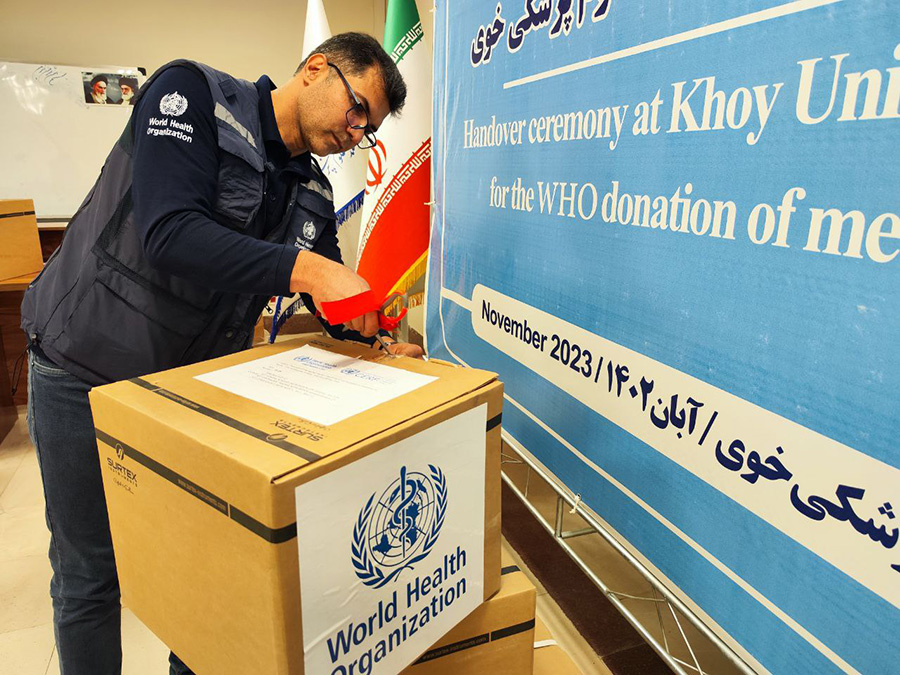 Emergency response equipment and supplies are handed over to Khoy University of Medical Sciences at a donation ceremony. Photo credit: WHO/WHO Iran9 November 2023, Tehran, Islamic Republic of Iran – WHO has donated vital medical equipment and supplies to enhance emergency response capacity in the wake of the early 2023 earthquake in Khoy, in the Iranian province of West Azerbaijan. This initiative has been made possible thanks to United Nations (UN) Central Emergency Response Fund (CERF) support.
Emergency response equipment and supplies are handed over to Khoy University of Medical Sciences at a donation ceremony. Photo credit: WHO/WHO Iran9 November 2023, Tehran, Islamic Republic of Iran – WHO has donated vital medical equipment and supplies to enhance emergency response capacity in the wake of the early 2023 earthquake in Khoy, in the Iranian province of West Azerbaijan. This initiative has been made possible thanks to United Nations (UN) Central Emergency Response Fund (CERF) support.
On 28 January 2023, at 21:44 local time, a devastating magnitude 5.9 earthquake struck Khoy, leaving more than 1445 people injured and causing significant damage to the region. WHO acted immediately in response to the government’s request for assistance, joining a multisectoral UN interagency mission to assess the situation, understand the needs of the earthquake-affected population and coordinate a rapid joint UN response.
Recognizing the urgent public health needs of the affected population, WHO has since embarked on a crucial mission to provide life-saving equipment and supplies to health facilities in Khoy and surrounding areas. The goal is to support health facilities to care for earthquake-affected patients and those with limited access to health services due to damage caused by the disaster.
To achieve this aim, WHO has procured and donated essential medical equipment, including 2 mechanical ventilators, to assist patients requiring breathing support; a single trauma and emergency surgery kit, to provide vital trauma care; and 3 portable automated external defibrillators, for cardiac life support.
“These critical resources are envisioned to not only save lives but also prevent mortality and morbidity in the region,” said Dr Syed Jaffar Hussain, WHO Representative and Head of Mission to the Islamic Republic of Iran. “This initiative reflects WHO’s dedication to its mission of promoting global health and responding to emergencies promptly and effectively.”
“WHO remains committed to working closely with local authorities and partners to enhance resilience and preparedness in the face of future disasters,” stressed Dr Hussain.
The project has an estimated 3440 direct beneficiaries, while an additional 150 000 people will indirectly benefit from the strengthened emergency response capacity in the region. The support provided by WHO, in collaboration with CERF, underscores the commitment to ensuring the health and well-being of affected populations in times of crisis.


